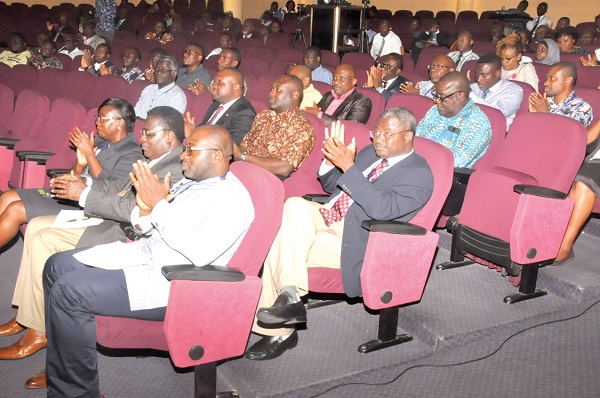The centre, which will start operations by the end of October 2019, brings to two the number of distribution centres in the country.
The first centre was established at Omenako in the Eastern Region in April 2019.
The Director-General of the Ghana Health Service (GHS), Dr Anthony Nsiah-Asare, who disclosed this, said the Mampong centre was currently being test run, and that it would provide emergency medical drone delivery services for hospitals in the middle belt of the country, comprising the Ashanti, Ahafo, Bono and Bono East regions, as well as parts of the Eastern and Volta regions.

Occasion
Dr Nsiah-Asare was speaking at a “Medical Knowledge Fiesta 2019”, a conference organised by the Ghana College of Physicians and Surgeons to build the capacity of health practitioners to help leverage on technology for efficient healthcare delivery in the country.
The four-day event is on the theme: "The role of technology and innovation in healthcare delivery in Ghana".It is a knowledge-sharing initiative to explore how technology can be used to improve health care in the country.
He said Fly Zipline Ghana, the company providing the drone services, was currently developing a dashboard that would allow key stakeholders and management teams to have real information on the status of facilities and deliveries.
Digitisation
Dr Nsiah-Asare said the GHS had set 2020 as the deadline for health facilities to digitise their operations to help deliver quality care to the people.
He explained that the measure was part of an agenda by the service to use technology to break barriers to improved health care and boost Ghana’s chances of achieving the UN Sustainable Development Goals (SDGs) in the health sector.
“We are rolling out an electronic medical records system to reduce possible medication errors that arise from the continuous use of paper-based systems.
We started with about 26 facilities in the Central Region, as well as the Komfo Anokye and the Korle Bu Teaching hospitals.
“There are some hospitals, including health centres and maternity homes, that are also piloting electronic healthcare delivery in their facilities; we want to ensure that all health facilities move from manual to electronic service delivery by 2020,” he added.
Postings
Dr Nsiah-Asare also said the GHS had developed a human resource information system to track the availability and distribution of health workers across the country.
He said the service had done a comprehensive human resource gap analysis and was now using its outcome as the basis for the deployment of health workers to areas where they were most needed.
“The GHS Council has worked out incentives for personnel who will accept to work in hard-to-reach areas.
I do not believe that people should receive the same incentives, although they work in different conditions,” he added.
The Rector of the GCPS, Professor Jacob Plange-Rhule, said following the increasing use of technology in all aspects of life, the need to incorporate innovations into healthcare systems was non-negotiable.
He said the use of mobile phone technology for basic healthcare services in some parts of the country had proved to be beneficial and ought to be scaled up.
He said the college had started using digital platforms to interface with students and for its administrative functions.
 info@businessghana.com
info@businessghana.com
















